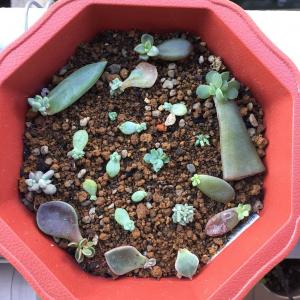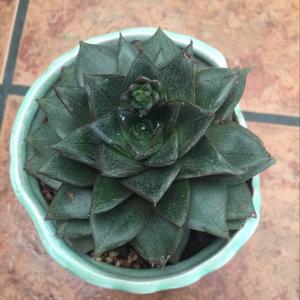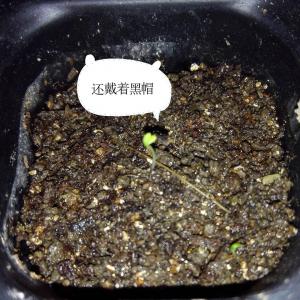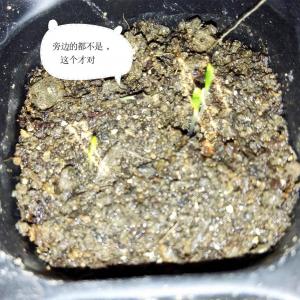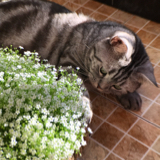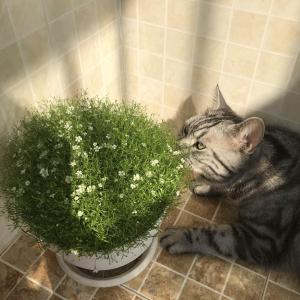文章
Miss Chen
2018年03月30日

Description: This perennial herbaceous plant forms a rosette of basal leaves spanning ¾-2½' across. The basal leaves are ascending to widely spreading (usually the latter). Individually, these leaves are 4-18" long, ½-2¼" across, and sessile; they are oblong-lanceolate, oblong-oblanceolate, or oblong-elliptic in shape and their margins are finely dentate (denticulate) and, to a lesser extent, smooth (entire). The basal leaves are often folded upward along their margins, otherwise they are flat. The leaf surfaces are pale green, glabrous, and occasionally glaucous; sometimes they are speckled purple. The texture of these leaves is slightly succulent and stiff. At maturity, an erect flowering stalk (2-6' in length) develops from the rosette of basal leaves. This stalk is pale to medium green, terete, glabrous, and often glaucous. Along its length underneath the inflorescence, there are widely separated leafy bracts about ½-4" long that become smaller as they ascend the stalk. These bracts are linear-lanceolate, ascending to erect, and pale green. Toward the upper end of this stalk, there is a spike of 10-60 flowers about ½-2' long.

Each flower is ¾-1¼" long, approximately tubular in shape, whitish green or yellowish green, and ascending to erect. Each flower has a tubular corolla with 6 convex ridges, 6 narrowly triangular lobes that are held erect, 6 strongly exerted stamens, and an inferior ovary with exerted style. The tubular body of the corolla is about 2-3 times as long as its lobes; they are both pale green and glabrous. The filaments of the stamens are golden yellow; the long slender anthers are white, becoming brown and deciduous with age. The style is also golden yellow, except for its 3-lobed stigma, which is white. At the base of each flower, there is a membranous-leafy bract up to ½" long. The flowers are mostly sessile,Distribution Map although a few lower flowers may have very short pedicels. The blooming period occurs from early- to mid-summer. The flowers have a slight to moderate fragrance that is sweet and fruity. Afterwards, the flowers are replaced by 3-celled seed capsules that become about ½" long at maturity. These capsules are globoid-ovoid in shape and angular. Within each cell of a capsule, there are 2 rows of flattened seeds. Mature seeds are black and half-orbicular in shape; they can be blown about by the wind. The root system consists of a bulbous caudex with fibrous roots below.
Cultivation: The preference is partial to full sun, dry-mesic to dry conditions, and either thin rocky soil or sandy soil where there is reduced competition from other ground vegetation. Eastern Agave (Manfreda virginica) can be cultivated as an ornamental plant in the back of a rock garden. While the flowers are not particularly showy, the basal leaves are attractive. Because Eastern Agave has a Crassula acid metabolism (CAM), like cacti and other desert plants, it is very drought tolerant.
Range & Habitat: The native Eastern Agave (Manfreda virginica) is occasional in southern Illinois, while in the rest of the state it is absent. Illinois lies along the northern range-limit of this species. Habitats include rocky openings in upland woodlands, rocky ledges and cliffs along rivers or streams, thinly wooded rocky slopes, upland savannas, and rocky glades (including chert, sandstone, and limestone). Outside of Illinois, this species has also been found in sandy habitats. It occurs in higher quality natural areas.
Faunal Associations: The flowers are cross-pollinated by Sphinx moths, Noctuid moths, and bumblebees (Groman & Pellmyr, 1999). Generally, the moths have been found to be more important pollinators than the bumblebees. These visitors suck nectar from the flowers; some of the bumblebees also collect pollen for their larvae. Aside from its pollination ecology, little is known about the floral-faunal relationships for this species.
Photographic Location: A thinly wooded rocky slope in southern Illinois.
Comments: This is the only member of the Agave family that is native to, or has naturalized in, Illinois. The distinctive Agave-like leaves and the tall spike of greenish flowers makes this species easy to identify when it is encountered in the wild. Unlike true Agaves (Agave spp.), the Eastern Agave (Manfreda virginica) can bloom multiple times during its lifespan. In contrast, the true Agaves bloom only once at the end of their lifespans after a period of several years (or even decades). The latter can be found in the desert SW and Florida of the United States, in Mexico, and other countries further to the south. Other scientific names of Eastern Agave are Polianthes virginica and Agave virginica. Other common names for this species are Virginia Agave and False Aloe. Sometimes Eastern Agave is assigned to the Lily family (Liliaceae) when the Agave family (Agavaceae) is reclassified as a subfamily of the former family.

Each flower is ¾-1¼" long, approximately tubular in shape, whitish green or yellowish green, and ascending to erect. Each flower has a tubular corolla with 6 convex ridges, 6 narrowly triangular lobes that are held erect, 6 strongly exerted stamens, and an inferior ovary with exerted style. The tubular body of the corolla is about 2-3 times as long as its lobes; they are both pale green and glabrous. The filaments of the stamens are golden yellow; the long slender anthers are white, becoming brown and deciduous with age. The style is also golden yellow, except for its 3-lobed stigma, which is white. At the base of each flower, there is a membranous-leafy bract up to ½" long. The flowers are mostly sessile,Distribution Map although a few lower flowers may have very short pedicels. The blooming period occurs from early- to mid-summer. The flowers have a slight to moderate fragrance that is sweet and fruity. Afterwards, the flowers are replaced by 3-celled seed capsules that become about ½" long at maturity. These capsules are globoid-ovoid in shape and angular. Within each cell of a capsule, there are 2 rows of flattened seeds. Mature seeds are black and half-orbicular in shape; they can be blown about by the wind. The root system consists of a bulbous caudex with fibrous roots below.
Cultivation: The preference is partial to full sun, dry-mesic to dry conditions, and either thin rocky soil or sandy soil where there is reduced competition from other ground vegetation. Eastern Agave (Manfreda virginica) can be cultivated as an ornamental plant in the back of a rock garden. While the flowers are not particularly showy, the basal leaves are attractive. Because Eastern Agave has a Crassula acid metabolism (CAM), like cacti and other desert plants, it is very drought tolerant.
Range & Habitat: The native Eastern Agave (Manfreda virginica) is occasional in southern Illinois, while in the rest of the state it is absent. Illinois lies along the northern range-limit of this species. Habitats include rocky openings in upland woodlands, rocky ledges and cliffs along rivers or streams, thinly wooded rocky slopes, upland savannas, and rocky glades (including chert, sandstone, and limestone). Outside of Illinois, this species has also been found in sandy habitats. It occurs in higher quality natural areas.
Faunal Associations: The flowers are cross-pollinated by Sphinx moths, Noctuid moths, and bumblebees (Groman & Pellmyr, 1999). Generally, the moths have been found to be more important pollinators than the bumblebees. These visitors suck nectar from the flowers; some of the bumblebees also collect pollen for their larvae. Aside from its pollination ecology, little is known about the floral-faunal relationships for this species.
Photographic Location: A thinly wooded rocky slope in southern Illinois.
Comments: This is the only member of the Agave family that is native to, or has naturalized in, Illinois. The distinctive Agave-like leaves and the tall spike of greenish flowers makes this species easy to identify when it is encountered in the wild. Unlike true Agaves (Agave spp.), the Eastern Agave (Manfreda virginica) can bloom multiple times during its lifespan. In contrast, the true Agaves bloom only once at the end of their lifespans after a period of several years (or even decades). The latter can be found in the desert SW and Florida of the United States, in Mexico, and other countries further to the south. Other scientific names of Eastern Agave are Polianthes virginica and Agave virginica. Other common names for this species are Virginia Agave and False Aloe. Sometimes Eastern Agave is assigned to the Lily family (Liliaceae) when the Agave family (Agavaceae) is reclassified as a subfamily of the former family.
0
0
文章
Miss Chen
2018年03月23日

Peppers are related to tomatoes and tomatillos and have similar structures and form. The plants grow 18 to 24 inches high, depending on the variety, and have one strong central stem with horizontal branches that produce fruit and flowers. A strong, deep root system is critical for good fruit production.

Root Depth
Most gardeners buy nursery transplants or start seeds indoors. When the young pepper transplants are set out in early summer, their root system encompasses the entire pot, usually 3 to 4 inches. By the end of the season, the pepper's roots may extend 8 to 12 inches deep and at least as wide, but they remain fairly fine. Pepper's roots are deeper than the roots of lettuce, broccoli or spinach, but remain fairly close to the surface.
Growing Conditions
Good growing conditions develop strong, deep roots. Wait until at least two weeks after the last frost before planting peppers and lay black plastic over the soil to warm it. Plant peppers when daytime temperatures are between 70 and 80 degrees Fahrenheit. Planting peppers too early in the season results in stunted roots and leaves, and even deformed fruit or reduced yields. Space the peppers 18 inches apart so roots have room to grow. Apply a low-nitrogen, high-phosphorus fertilizer, such as a 5-10-10 formula immediately after planting to establish strong roots. Water the plants as needed to keep the soil evenly moist.

Cultivation
Pull weeds by hand or cultivate them very shallowly with a hoe. The roots of pepper plants lie near the soil surface and are easily damaged by deep cultivation. Better yet, mulch pepper plants with thin layers of dried grass clippings or straw to reduce weed growth and prevent damage by weeding.
Disease
Peppers aren't particularly fussy about soil types, but the soil must be well-drained. In heavy, wet soils, peppers are prone to rotting roots and other diseases. Blossom-end rot may affect pepper fruits, causing the bottoms of the fruits to turn black. Prevent this disease by cultivating shallowly to avoid damaging the roots. Water the plants evenly and consistently, and add lime to the soil every two or three years if the soil is alkaline.

Root Depth
Most gardeners buy nursery transplants or start seeds indoors. When the young pepper transplants are set out in early summer, their root system encompasses the entire pot, usually 3 to 4 inches. By the end of the season, the pepper's roots may extend 8 to 12 inches deep and at least as wide, but they remain fairly fine. Pepper's roots are deeper than the roots of lettuce, broccoli or spinach, but remain fairly close to the surface.
Growing Conditions
Good growing conditions develop strong, deep roots. Wait until at least two weeks after the last frost before planting peppers and lay black plastic over the soil to warm it. Plant peppers when daytime temperatures are between 70 and 80 degrees Fahrenheit. Planting peppers too early in the season results in stunted roots and leaves, and even deformed fruit or reduced yields. Space the peppers 18 inches apart so roots have room to grow. Apply a low-nitrogen, high-phosphorus fertilizer, such as a 5-10-10 formula immediately after planting to establish strong roots. Water the plants as needed to keep the soil evenly moist.

Cultivation
Pull weeds by hand or cultivate them very shallowly with a hoe. The roots of pepper plants lie near the soil surface and are easily damaged by deep cultivation. Better yet, mulch pepper plants with thin layers of dried grass clippings or straw to reduce weed growth and prevent damage by weeding.
Disease
Peppers aren't particularly fussy about soil types, but the soil must be well-drained. In heavy, wet soils, peppers are prone to rotting roots and other diseases. Blossom-end rot may affect pepper fruits, causing the bottoms of the fruits to turn black. Prevent this disease by cultivating shallowly to avoid damaging the roots. Water the plants evenly and consistently, and add lime to the soil every two or three years if the soil is alkaline.
0
0
文章
权问薇
2018年03月20日


正常环境需要3天至5天
所谓的正常环境就是适合此植物生长的环境,首先要维持温度在18度至28度之间,且无较强的阳光照晒,但是空气的流通性要好,在此环境中可以3天至5天浇一次水,也就是盆土上层有轻微偏干的情况出现时,就要时行浇水。

不同的环境不同的浇水时间
若温度升至28度以上时,此时要让土壤时刻都维持在偏潮湿的情况下,浇水的时间就要缩短,约2天左右进行一次浇水;若温度降至15度以下时,盆土上层要在偏干些方可时行浇水,约6天至8天时行一次浇水即可,且温度越低,浇水的间隔越长。

注意事项
虽然此植物喜水,但也不可浇水过多,否则会出现黄叶现象。严重时还会遭受其它病虫害的侵入。
当温度降至10度时,此时若浇水过多,很容易发生冻害,此时除了换环境养护外,还要减少浇水。
因为每个人的养殖环境不同,所以浇水也要变通,而且浇水前最好观察一下盆土的状态,根据盆土的实际情况来浇水才是最正确的做法。

0
0









